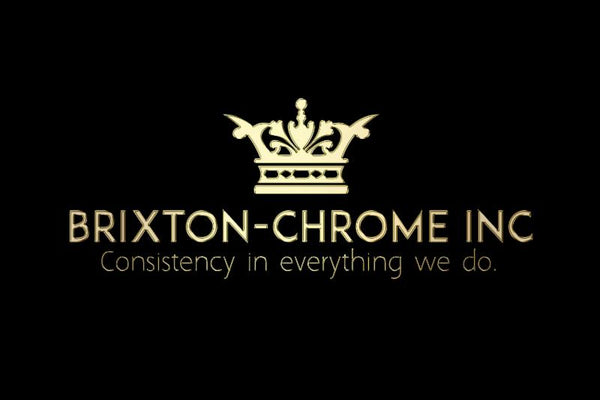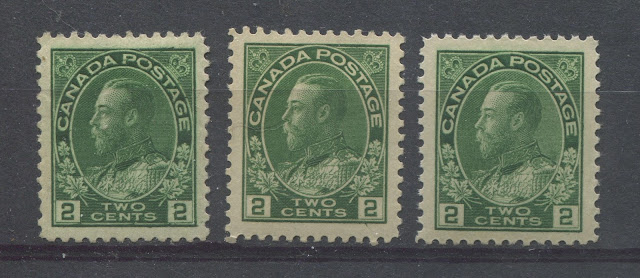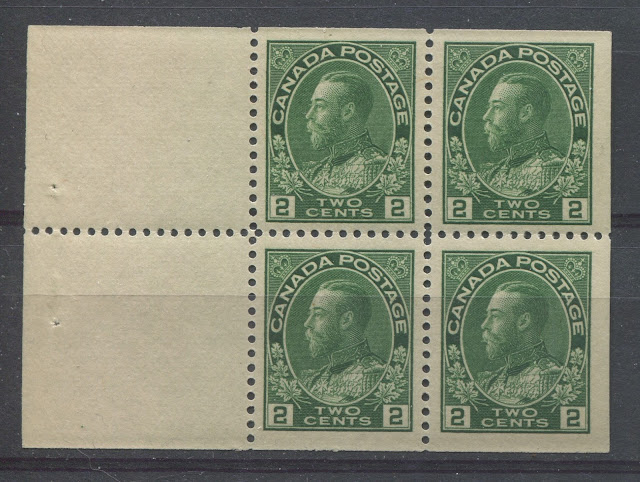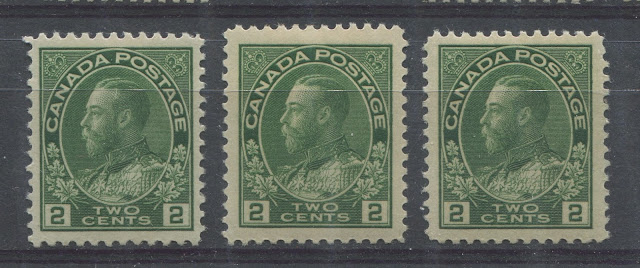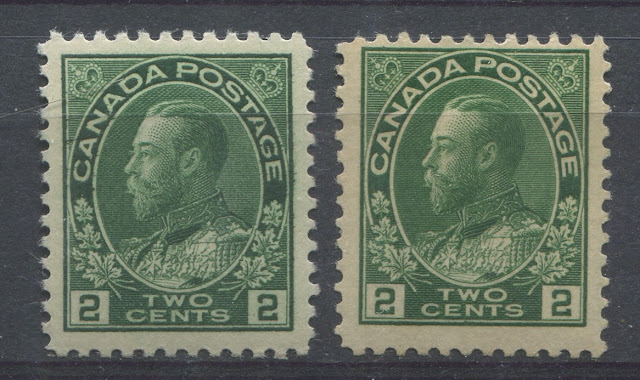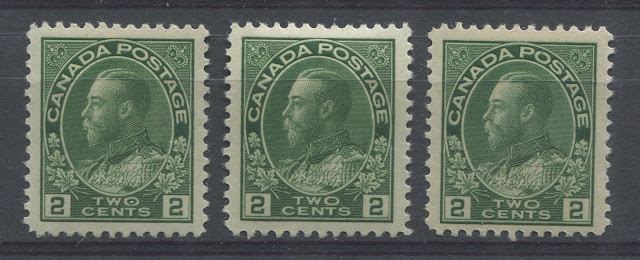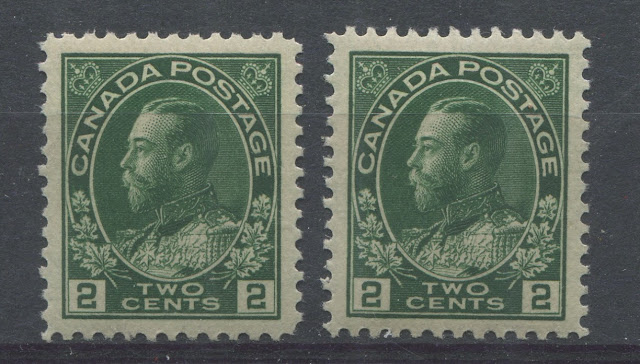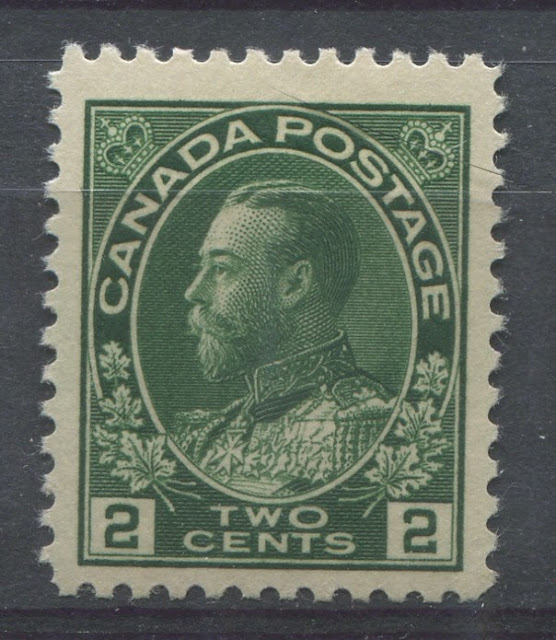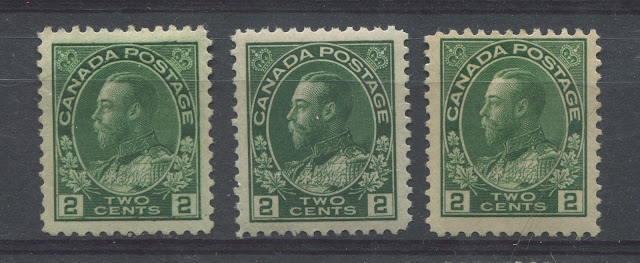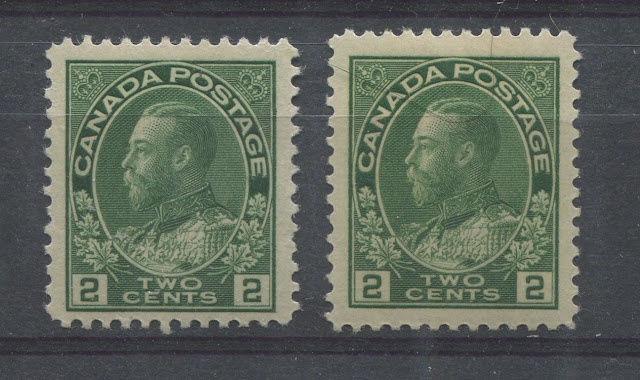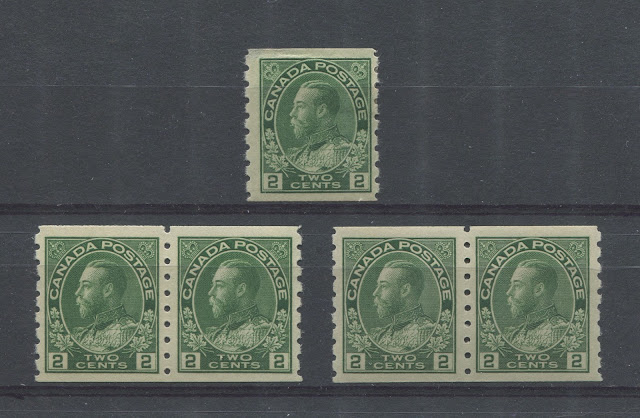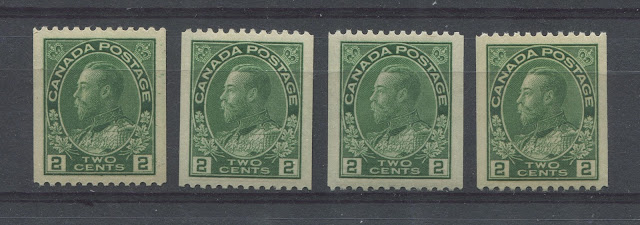This stamp, which replaced the 2c green in 1922 is tricky because of the fact that many of the listed shade groups are very similar to one another, and classifying individual stamps can be very tricky. Like the 2c carmine before it, most of the listed shade groups do not carry any real premium in price, so many collectors do not bother trying to identify them. However, identifying these shades can aid in identifying fake coils as well as spotting better varieties at a glance, like the rare wet printing of the part-perforate 8 vertical coil.
Unitrade lists three major shade groups for the sheet stamps: yellow green, green and deep green. All three of these, except for the deep green are listed for both the wet printings and the dry printings. As we shall see though, there are very slight differences between the shades for each printing, so I will show them both here. As with my previous posts, I will show you the Unitrade group as it is named for each shade and then I will cross reference the shade groups to the Stanley Gibbons Colour key.
For the booklet panes of 6 and 4 plus 2 labels, Unitrade only calls them yellow green. However, in reality, the panes of four are found in the same range of shades as all the other wet printings, while the panes of 6 come in all shades as well, since these panes were printed using both wet and dry methods. Unfortunately I only have one pane of 4 plus 2 labels to illustrate in this post for now, though I will add some panes of 6 as I come across them.
The only coil stamps that are found on this stamp are those perforated 8 vertically, and the scarce perf. 12 horizontal, which is very widely faked. Interestingly, Unitrade calls all of the coils perforated 8 vertically green, while those perforated 12 horizontally are classified as yellow green. Thus, there is some internal inconsistency in Unitrade's nomenclature as the wet printing coils are found in both yellow green and green for both perforations, while the dry printings are generally only found in the same shades as the dry printings of the sheet stamps. The part perforate coils are found in deep green for the wet printings - a fact that can enable you to spot them from a front scan, while the dry printings are found in the same shades as the common green or yellow green of the sheet stamps.
One of the difficulties with the Unitrade shade names is that there is no stamp that is a true yellow green as we shall see. The yellow green is yellowish relative to the other shades, but it is not yellow green when compared to the Gibbons Colour Key.
Yellow Green Group
Wet Printings
The above three stamps are from what Unitrade calls yellow green. Interestingly, this shade group is actually the closest thing to Gibbon's true green shade that there is. There is some slight variation between these three stamps, but generally all the same shade group.
The above booklet pane is also closest to the Gibbons' green colour swatch, so it is the same shade as the Unitrade named yellow-green sheet stamps above. Consequently, Unitrade's naming of the shade as yellow-green is internally consistent with its naming of the shade on the sheet stamps.
Dry Printings
The above three stamps are all examples of the yellow-green dry printing as named in Unitrade. This shade, if you compare it to the above group, is less rich and flatter in appearance, but it is definitely yellowish compared to the green shades, though some comparison is often necessary. In terms of the Gibbons Colour Key, these are all closest to the dull yellowish green swatch if that swatch were made slightly deeper.
Green Group
Wet Printings
These shades are close to the yellow green shades above for the wet printings, but they are a little less yellowish. In terms of the Gibbons Colour Key, these stamps are closest to the Myrtle green swatch.
Dry Printings
These three stamps are all examples of the green shades of the dry printing. They are also closest to the green swatch on the Gibbons' colour key.
Deep Green Group
Wet Printings
These two stamps are examples of the deep green on the thin paper, while the scan below shows the same shade on the normal paper.
As you can see, there is very little variation between these colours. In terms of the Gibbons Colour Key, Unitrade is bang on, with this colour being closest to the deep green swatch for the two top stamps, while the bottom stamp shown here is closest to the Myrtle green swatch if it were deeper.
Comparing the Shades
Wet Printings
From left to right we have:
- Unitrade's yellow green, which is Gibbons' green.
- Unitrade's deep green, which is the same for Gibbons.
- Unitrade's green, which is Myrtle green in Gibbons.
Dry Printings
On the left we have:
- Unitrade's green, which is the same in Gibbons.
- Unitrade's yellow green, which in Gibbons is deep dull yellowish green.
The difference between these two is subtle, but if you look closely you should be able to see that the shade on the right is yellowish compared to the one on the left.
The Coil Stamps
Perforated 8 Vertically
The top stamp is a wet printing in Gibbons'green shade, which by now, we know corresponds to Unitrade's yellow-green, while these coils are only listed as green in Unitrade. The left coil pair is a dry printing in Gibbons' green, while the one on the right is Gibbons'deep dull yellowish green.
Perforated 12 Horizontally
The above four stamps are all genuine examples of this scarce coil. All of them have the required characteristic, which is a small nick in the outer frameline just to the left of the outermost maple leaf at left. I will cover this in more detail when I post about the coil stamps. However, suffice to say at this point that the die used to prepare this coil had this characteristic, so all of the printed stamps should as well. The shade, as you can see, is identical across all four stamps and it is the same shade as the yellow green group, that is to say Gibbons' green shade.
In addition, this coil was only printed using the wet method. So if you see dry printings, they are sheet stamps or booklet stamps that have been trimmed. Also the stamps above all have fairly substantial side margins of at least 3 mm between the sides. So copies that have margins smaller than 2 mm combined are very suspect. Finally, if the example you have is not the above shade, chances are it may be a fake.
That concludes my discussion of the shades on this stamp.
